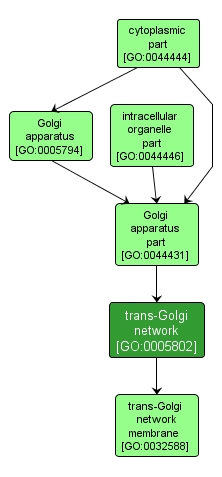| Desc: |
The network of interconnected tubular and cisternal structures located at the side of the Golgi apparatus distal to the endoplasmic reticulum, from which secretory vesicles emerge. The trans-Golgi network is important in the later stages of protein secretion where it is thought to play a key role in the sorting and targeting of secreted proteins to the correct destination. |














